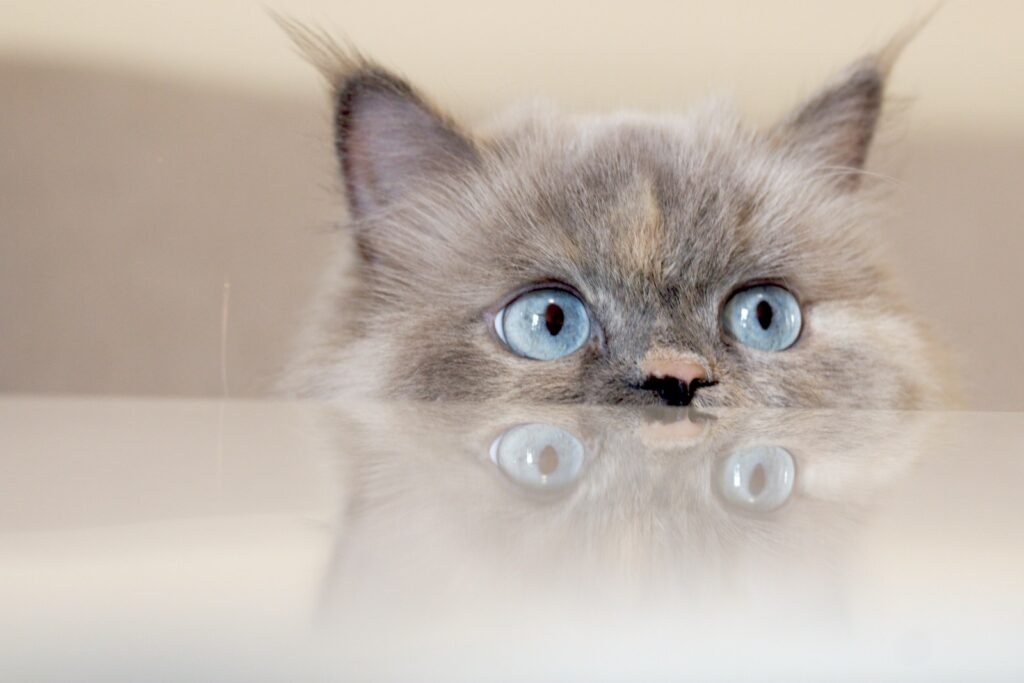Imagine this: you’re sipping your morning coffee, scrolling through messages, when suddenly you hear a telltale clatter from the next room. Your heart skips a beat. Was it your favorite mug or just another pen lost to feline curiosity? If you’ve ever shared your life with a cat, you know the struggle—the constant dance between anticipation and chaos. But what if technology could tip the balance? Could artificial intelligence one day warn you before your whiskered companion sends another object flying? Hold onto your knick-knacks as we explore whether AI can really predict your cat’s next mischievous move.
The Unpredictable Nature of Cats
Cats are notorious for their playful yet mysterious behavior. One moment, they’re curled up peacefully; the next, they’re leaping onto shelves and swatting at anything in sight. This unpredictability is part of their charm but also a source of endless frustration for pet owners. Scientists have tried to decode feline behavior for decades, but cats remain elusive. Even seasoned cat owners can’t always guess when their pet is about to become a one-cat wrecking crew. This unpredictability poses a fascinating challenge for technology—can machines succeed where humans so often fail?
What Makes Cats Knock Things Over?
At first glance, it may seem like cats knock things over just to annoy us. In reality, this behavior is deeply rooted in their instincts. Cats are natural hunters, and swatting at objects mimics the movements they’d use to catch prey in the wild. They’re also curious creatures who investigate their environment by touch. Sometimes, making noise or watching something fall is just plain entertaining for them. Understanding these motivations is crucial for anyone hoping to anticipate their actions, whether you’re a cat owner or an AI developer.
The Science Behind Feline Movement
Every leap, pounce, and swat is guided by a cat’s finely tuned sensory system. Their excellent vision, lightning-fast reflexes, and sensitive whiskers allow them to navigate and interact with their environment in ways that seem almost magical. Scientists study these movements using high-speed cameras and motion sensors. Analyzing such data reveals patterns—subtle shifts in posture, tail flicks, or changes in ear position—that often precede an attack on a nearby object. These tiny cues, though easy to miss by the human eye, might be just what AI needs to crack the code.
Early Attempts at Predicting Animal Behavior

Before jumping to futuristic AI, it’s worth noting that scientists have long tried to predict animal behavior using simpler tools. From dog bark detectors to wildlife motion sensors, researchers have developed gadgets that respond to specific triggers. However, predicting complex, nuanced actions—like a cat’s decision to knock something over—has proven much harder. These early efforts laid the groundwork for today’s more sophisticated approaches, showing both the possibilities and limitations of technology.
How AI Observes and Learns

Artificial intelligence learns by processing vast amounts of data. For predicting feline mischief, this means analyzing thousands of hours of video footage showing cats in action. Machine learning algorithms look for patterns that precede a swat or push—the twitch of a tail, the focus in their eyes, or a shift in weight. Over time, the AI “learns” which behaviors most often lead to chaos. This process is similar to how voice assistants learn to understand accents or how self-driving cars learn to recognize pedestrians.
Training AI with Cat Videos
Believe it or not, those endless cat videos online are a goldmine for researchers. By feeding AI systems with countless examples of cats interacting with objects, scientists can train algorithms to spot warning signs. The system might notice that a cat often circles an object before making a move, or that a certain ear flick means trouble is brewing. The more data the AI is exposed to, the better it becomes at making predictions. In a way, your viral cat clips could be the key to future breakthroughs!
Sensors and Cameras in the Home
To make real-time predictions, AI systems rely on input from sensors and cameras placed around the home. These devices record your cat’s movements, tracking everything from posture to paw placement. Advanced cameras can even pick up subtle muscle twitches or changes in fur direction. Combined with microphones that detect purring or meowing, the data provides a comprehensive view of feline activity. With enough input, AI can begin to “see” your cat’s intentions before you do.
Data Privacy and Ethical Concerns
While the idea of AI watching your cat all day sounds fun, it also raises important questions. How much surveillance is too much? Who has access to the footage? Pet owners must consider their own privacy as well as the comfort of their pets. Ethical AI development means balancing innovation with respect for both humans and animals. Companies working on these technologies are increasingly focused on transparency, giving users control over what’s recorded and how it’s used.
Limitations of Current Technology
Despite rapid advances, today’s AI still struggles with the complexity of animal behavior. Cats are individuals; what triggers one cat may not faze another. AI models trained on one group of cats might not work well for others. Environmental factors—like a sudden noise or a new piece of furniture—can throw off predictions. While AI can spot trends and issue warnings, it won’t catch every act of feline mischief. These limitations remind us that technology, while powerful, can’t replace the nuances of living with animals.
Real-World Applications and Smart Homes
AI-powered pet cameras are already making waves in smart homes. These devices can alert owners when their cat is active, offer live video feeds, and even dispense treats. Some advanced models use AI to detect unusual behavior or loud noises—helpful if your cat is about to get into trouble. While predicting a specific act like knocking something over remains a challenge, the technology is improving fast. In the near future, your home might warn you: “Mittens is eyeing the vase again!”
How Owners Can Benefit
Knowing when your cat is about to cause chaos has obvious benefits. You might save precious family heirlooms or prevent messes before they happen. More importantly, AI can help you understand your cat’s routines and preferences. By highlighting patterns—like favorite napping spots or regular playtimes—these systems can strengthen the bond between you and your pet. You may even learn new things about your furry friend’s personality and needs.
Challenges in Decoding Individual Cat Personalities
Every cat is unique, with quirks and habits that defy easy explanation. Some are bold and adventurous, others shy and reserved. These differences make it hard for AI to create a one-size-fits-all prediction model. Personalization is key—systems must learn the mannerisms of each cat over time. This requires patience, lots of data, and sometimes a little bit of luck. For now, even the best AI works best as a helpful tool, not a crystal ball.
The Role of Cat Owners in Training AI
Pet owners play a crucial role in making AI more accurate. By labeling videos (for example, marking when a cat is about to knock something over), you help train the system. Some companies offer apps where users can tag behaviors or upload new clips. The more feedback AI gets from real people, the sharper its predictions become. It’s a team effort—humans and machines learning together for a more harmonious home.
Future Possibilities: Beyond Knocking Things Over
The implications of AI in pet care go far beyond stopping broken vases. In the future, these systems could monitor your cat’s health, detect signs of stress, or even provide entertainment when you’re away. Imagine a world where your smart home not only protects your belongings but also keeps your pet happier and healthier. The possibilities are as exciting as they are endless, offering fresh hope for cat lovers everywhere.
What Scientists Are Saying Today
Researchers in animal behavior and artificial intelligence are buzzing with excitement. New studies are exploring ways to blend neuroscience, computer vision, and even wearable tech for cats. Experts believe that, with enough data and refined algorithms, AI could reliably predict many common feline actions—including the infamous knock-over. Still, most agree we’re not quite there yet. As one scientist put it, “Cats keep us humble. Just when you think you understand them, they do something completely unexpected.”
Cultural Impact and the Joy of Living with Cats
Let’s face it—part of what we love about cats is their unpredictability. Those sudden antics and mischievous moments bring laughter, surprise, and sometimes a touch of exasperation. While AI may soon help us anticipate some of their shenanigans, it can never replace the wonder of sharing life with a creature so full of surprises. Maybe that’s the magic of cats—they remind us to embrace the unexpected, one toppled glass at a time.
Living with cats is an adventure. As technology evolves, we may one day outsmart their antics—or at least get a helpful warning before disaster strikes. Until then, every clink and crash is just another chapter in the delightful, unpredictable story of feline companionship.



